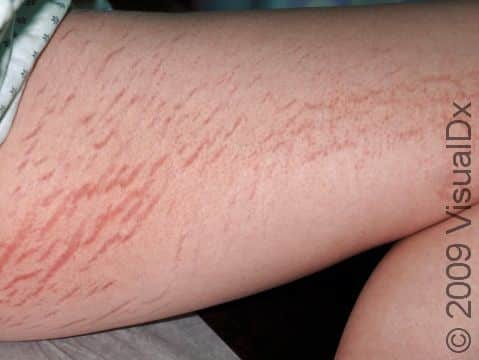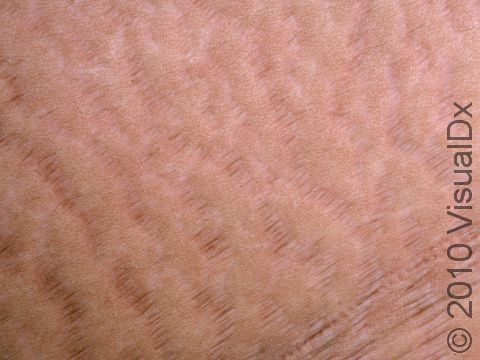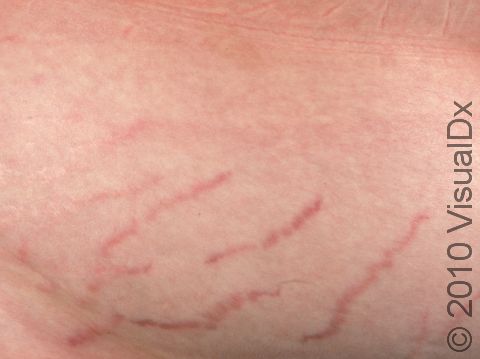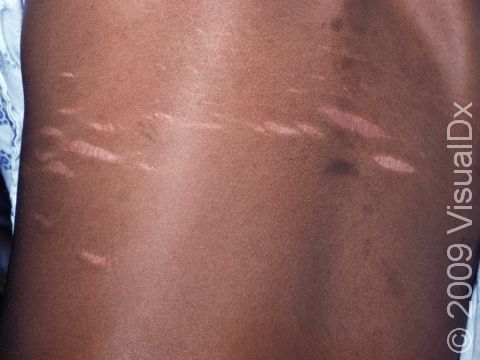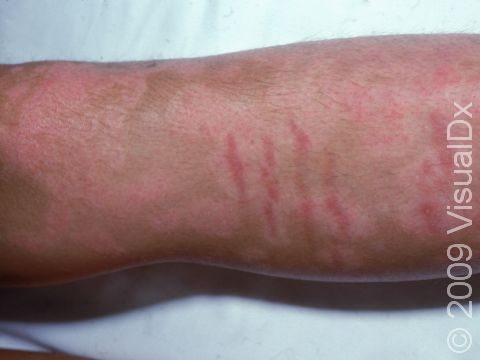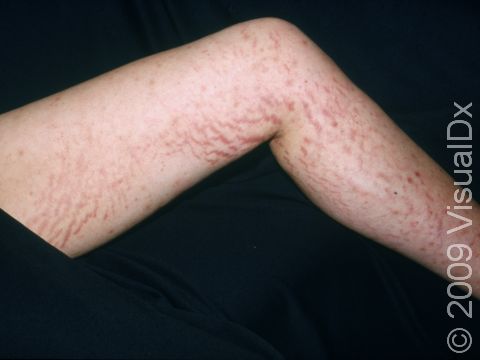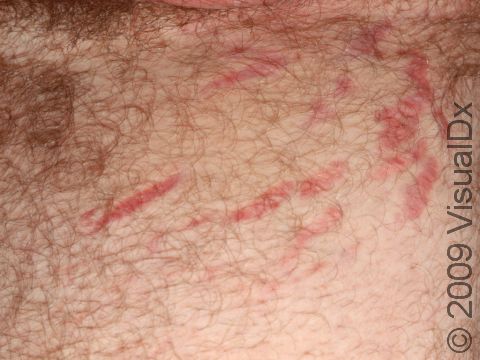Stretch Marks (Striae)
Stretch marks (striae) are common stripe-like skin marks that develop as a result of thinning of the skin from rapid growth, rapid weight loss or gain, or as a result of some diseases.
Who's At Risk?
In the United States, almost all pregnant individuals, 70% of adolescent girls, and 40% of adolescent boys have stretch marks. These are due to growth and stretching and thinning of the skin. They are more common in females and occur equally in all races / ethnicities.
Stretch marks are also seen in people who use oral or topical corticosteroids, have a disease of the adrenal gland, or have rare hereditary (genetic) disorders.
Signs & Symptoms
Stretch marks are usually seen on the belly and breasts during pregnancy. They are common on the shoulders of bodybuilders. Stretch marks may be widespread or occur in other locations in people who are using corticosteroids or have an underlying disease.
Stretch marks change in appearance with time. At first, they are faint pink or brownish, raised, and appear in band-like marks, which can be itchy. They gradually enlarge and become red to purple, often with a wrinkled surface. Finally, they become white or light, slightly flatter, with a crepe-paper-like appearance. The linear marks can be 1-10 mm wide and many centimeters long.
Self-Care Guidelines
- If you are using a topical corticosteroid cream, talk to your medical professional about stopping the medication or potentially substituting another medication.
- Over-the-counter products that are marketed for fading or removing stretch marks are generally considered ineffective.
Treatments
If the stretch marks are cosmetically distressing to you, early red areas can be medically treated, but treatments may not be covered by insurance. Treatments include:
- Tretinoin cream.
- Laser treatments.
- Chemical peels.
If the diagnosis or origin of the stretch marks is uncertain, a biopsy and blood tests might be done.
Visit Urgency
See your medical professional if stretch marks appear without an obvious cause (ie, pregnancy, rapid weight gain or loss), if they develop on an area of topical steroid treatment, or if you want to talk about options for treating your stretch marks.
Trusted Links
References
Bolognia J, Schaffer JV, Cerroni L. Dermatology. 4th ed. Philadelphia, PA: Elsevier; 2018.
James WD, Elston D, Treat JR, Rosenbach MA. Andrew’s Diseases of the Skin. 13th ed. Philadelphia, PA: Elsevier; 2019.
Kang S, Amagai M, Bruckner AL, et al. Fitzpatrick’s Dermatology. 9th ed. New York, NY: McGraw-Hill Education; 2019.
Last modified on June 26th, 2024 at 12:19 pm

Not sure what to look for?
Try our new Rash and Skin Condition Finder
